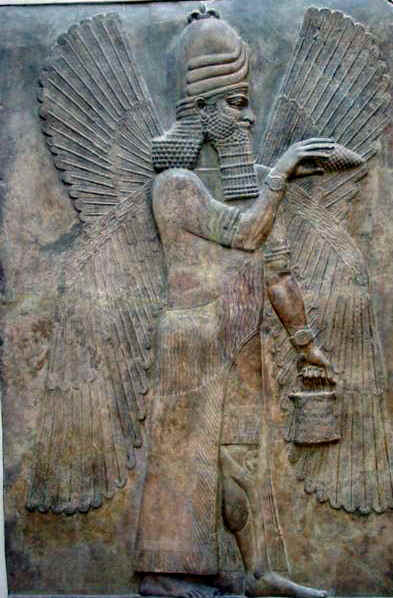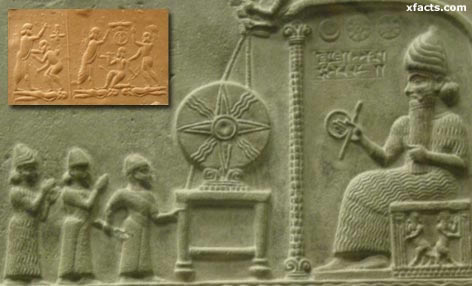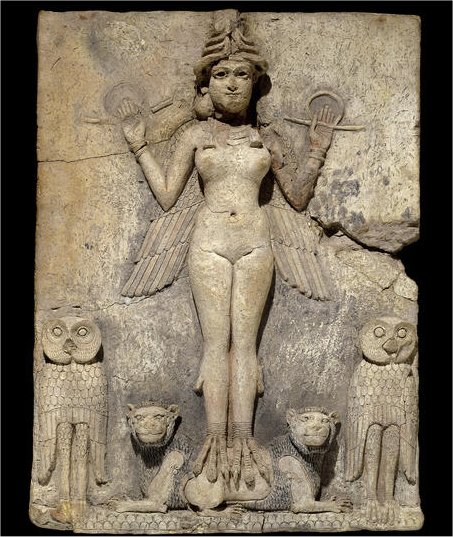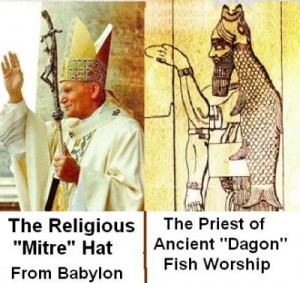It looks like you're using an Ad Blocker.
Please white-list or disable AboveTopSecret.com in your ad-blocking tool.
Thank you.
Some features of ATS will be disabled while you continue to use an ad-blocker.
share:

I am going to get a lot of flak, from everyone on this subject. From atheist, from die hard alien creator fans, from annunaki cult, from occultist, from everyone. I do not know a single person, besides those who accept magic, or simply, the magic of magic in a world that has gone all techna. I enjoy the brand of being called the most hated. This little reflection of mine has come from great meditation, spiritual awareness and dozens upon dozens of studying of ancient text. I'll be using the bible as more of a historical pinpoint because it is more "known" than enum elisha or other supernatural/spiritual/mythological text.
Civilizations have come and gone. Either aware of the reality of what is possible or deluded with an idea that there is a reality we still do not know of. While the Large hadron collider, haarp and other fascinating technology are discussed on ats, the idea of an extra dimensional universe becomes to unravel itself slowly through, not just by science or physics, but through an over all conscious awakening
I honestly do not know what happened., why they came for a short period of time, left, or are back and forth, hidden in people. Because I have a variety of ideas and no proof, besides the proof that i show here. Which is truth. Although skeptics will scoff and hound in a unrealistic apporach and study on ancient human history.
Either you join me in the "idea/theory" of my thesis (theist:lol or not, at least bring something to the table.
a explination of what the Anunnaki are.
en.wikipedia.org...
The Anunnaki (also transcribed as: Anunna, Anunnaku, Ananaki and other variations) are a group of Mesopotamian (Sumerian, Akkadian, Assyrian and Babylonian) deities. The name is variously written "da-nuna", "da-nuna-ke4-ne", or "da-nun-na", meaning something to the effect of "those of royal blood"[1] or 'princely offspring'.[2] Their relation to the group of gods known as the Igigi is unclear — at times the names are used synonymously but in the Atra-Hasis flood myth they have to work for the Anunnaki, rebelling after 40 days and replaced by the creation of humans.[3]
We've heard what Anunnaki are throughout ATS and honestly, this brief clip is just a piece of the iceberg.
Gen: 6:4
The Nephilim were on the earth in those days--and also afterward--when the sons of God went to the daughters of men and had children by them. They were the heroes of old, men of renown.
The Lord saw how great man;'s wickedness on the earth had become and that every inclination of the thoughts of his heart was only evil all the time. The Lord was grieved that he had made man on the earth and his heart was filled with pain. So the Lord said, I ill wipe mankind, whom I have created , from the face of the earth- Men and animals and creatures that move along the ground and birds of the air- For i am grieved that I have made them. But noah found favor.....
Nephilim means giants, that is a ats 101 basic alien lingo.

Yes it is the same picture, but here I go. Pine cones were a symbol of fertility, this is ancient symbology 101. Pine cones were a symbol of great length and girth. If you get my drift. Fertility symbols of a god was not just used for procreation, but also a real king who impregnated the daughters of men.
The Nephilim[pronunciation?] (plural) are the offspring of the "sons of God" and the "daughters of men" in Genesis 6:4, or giants who inhabit Canaan in Numbers 13:33. A similar word with different vowel-sounds is used in Ezekiel 32:27 to refer to dead Philistine warriors.
Ats, do you want to know what Sons of God mean? The offspring of God were and are Angels. Compared to the "Son of God" A Jesus reference .
Etymology This subject also relates to the etymology and meaning of the phrase "sons of God" as well as the fallen ones. "Nephilim" (נְפִילִים) probably derives from the Hebrew root npl (נָפַל), "to fall" which also includes "to cause to fall" and "to kill, to ruin". The Brown-Driver-Briggs Lexicon gives the meaning as "giants"[1] Robert Baker Girdlestone[2] argued the word comes from the Hiphil causative stem. Adam Clarke took it as passive, "fallen", "apostates". Ronald Hendel states that it is a passive form "ones who have fallen", equivalent grammatically to paqid "one who is appointed" (i.e. overseer), asir, "one who is bound", (i.e. prisoner) etc.[3][4]
Another turn-a-phrase meaning fallen ones, or fallen angels...
They made great effort in carving a fictitious being that they worshiped Probably was real

Amazingly

One of the greatest, AHA! moment of studying ancient text and also the key to understanding much of my conclusion and acceptance of my personal experience and observation is Lillith. Many text paint a different character around her,. Honestly, with enough study, i'm sure many can come to the same conclusion
Lilith (Hebrew: לילית; lilit, or lilith) is a character in Jewish mythology, developed earliest in the Babylonian Talmud, who is generally thought to be related to a class of female demons Līlīṯu in Mesopotamian texts. However, Lowell K. Handy (1997) notes, "Very little information has been found relating to the Akkadian and Babylonian view of these demons. Two sources of information previously used to define Lilith are both suspect."[1] The two problematic sources are the Gilgamesh appendix and the Arslan Tash amulets, which are discussed below.[2] The term Lilith occurs in Isaiah 34:14, either singular or plural according to variations in the earliest manuscripts, though in a list of animals. In the Dead Sea Scrolls Songs of the Sage the term first occurs in a list of monsters. In Jewish magical inscriptions, on bowls and amulets from the 6th century CE onwards, Lilith is identified as a female demon and the first visual depictions appear. In Jewish folklore, from the 8th–10th centuries Alphabet of Ben Sira onwards, Lilith becomes Adam's first wife, who was created at the same time and from the same earth as Adam. This contrasts with Eve, who was created from one of Adam's ribs. The legend was greatly developed during the Middle Ages, in the tradition of Aggadic midrashim, the Zohar and Jewish mysticism.[3] In the 13th Century writings of Rabbi Isaac ben Jacob ha-Cohen, for example, Lilith left Adam after she refused to become subservient to him and then would not return to the Garden of Eden after she mated with archangel Samael.[4] The resulting Lilith legend is still commonly used as source material in modern Western culture, literature, occultism, fantasy, and horror.
edit on 29-5-2012 by Jordan River because: (no reason given)
edit on 29-5-2012 by Jordan River because: (no reason
given)
edit on 29-5-2012 by Jordan River because: (no reason given)
edit on 29-5-2012 by Jordan River because: (no
reason given)
edit on 29-5-2012 by Jordan River because: (no reason given)
en.wikipedia.org...
Oddly enough, even the Jews believed in demons. This is from a fragment of the dead sea scrolls
Here is where it becomes very interesting and let me explain my position.
Genesis 1 and 2 are the re telling of the same story. There seems to be an edit in between there as well and this gap tells me that this is not the Orginal handwritten word of Moses, more or less a priestly edit.
Is this where the gap of two women were erased? the erased lillith???? Did Jews even want to touch on the idea of a divorce?
(from David adams leeming (world of myth)
Majority of what was written as a law of moses or what was, was either lost or just carried on through oral tradition. Moses suppose life span is 1391–1271 BCE give or take 300 years. IMO 100 years.
I hope I at least brought to your attention of historical importance around these ancient years. Honestly, I hope I made some of the skeptics a little bit more open to the idea of a "fantasy world" that they my not believe. In the end, either my viewpoint is seen or not should be decided upon the viewer and ultimately this is why it is a kept secret on giants
In the end there seems to be a large influence of Babylonian influences, starting from Judaism all the way down to christianity. The question is, can you trust them and there locked and key secrets?

Special thanks to homegirl open4truth
The spirit in the tree in the Gilgamesh Epic Samuel Noah Kramer (1932, published 1938)[9] translated ki-sikil-lil-la-ke as Lilith in "Tablet XII" of the Epic of Gilgamesh dated c.600 BC. "Tablet XII" is not part of the Epic of Gilgamesh, but is a later Akkadian translation of the latter part of the Sumerian poem of Bilgames and the Netherworld.[10] The ki-sikil-lil-la-ke is associated with a serpent and a zu bird,[11] In Bilgames and the Netherworld, a huluppu tree (willow) grows in Inanna's garden in Uruk, whose wood she plans to use to build a new throne. After ten years of growth, she comes to harvest it and finds a serpent living at its base, a Zu bird raising young in its crown, and that a ki-sikil-lil-la-ke made a house in its trunk. Bilgames/Gilgamesh is said to have smitten the snake, and then the zu bird flew away to the mountains with its young, while the ki-sikil-lil-la-ke fearfully destroys its house and runs for the forest.[12][13] Kramer's identification is repeated without question or justification by Manfred Hutter in the article on Lilith in Dictionary of deities and demons in the Bible (1999).[14] According to a new source from Late Antiquity the Lilith(s) appear(s) in a Mandaic magic story where she (they) is (are) considered to represent the branch(es) of a tree with other demonic figures that form other parts of the tree.[15] Suggested translations for the Tablet XII spirit in the tree include ki-sikil as "sacred place", lil as "spirit", and lil-la-ke as "water spirit".[16] but also simply "owl", given that the lil is building a home in the trunk of the tree.[17] A connection between the Gilgamesh ki-sikil-lil-la-ke and the Jewish Lilith was rejected by Dietrich Opitz (1932)[18] and other scholars, finally being rejected on textual grounds by Sergio Ribichini (1978).[19]
Oddly enough, even the Jews believed in demons. This is from a fragment of the dead sea scrolls
And I, the Instructor, proclaim His glorious splendour so as to frighten and to te[rrify] all the spirits of the destroying angels, spirits of the bastards, demons, Lilith, howlers, and [desert dwellers…] and those which fall upon men without warning to lead them astray from a spirit of understanding and to make their heart and their […] desolate during the present dominion of wickedness and predetermined time of humiliations for the sons of lig[ht], by the guilt of the ages of [those] smitten by iniquity – not for eternal destruction, [bu]t for an era of humiliation for transgression.[85]
Here is where it becomes very interesting and let me explain my position.
Genesis 1 and 2 are the re telling of the same story. There seems to be an edit in between there as well and this gap tells me that this is not the Orginal handwritten word of Moses, more or less a priestly edit.
Is this where the gap of two women were erased? the erased lillith???? Did Jews even want to touch on the idea of a divorce?
The Watery chaos or deep (tehom) of the hebrew creation story, part of which was probably composed during the soon after the babylonian captivity (that is during the sixth and fifth century BCE), owes something to the concept of the Tiamat in the Babylonian Enuma Elish. If the Tiama tehom connection is not clear in the official Hebrew creation story, it is evident enough elsewhere in Hebrew scripture,. When we read these words from psalm 89 (9-10) we are reminded of the Babylonian wars in heaven and of the creative splitting of the primal mother..
Thou rulest the raging of the sea: when the waves tyhere of arise, thou stillest them.
Thou hast broken Rahab in pieces, as one that is slain; thou hast scattered thine enemies with thy strong arms.
But if the Babylonian creation myth was meant to establish the rule of Marduk, the hebrew Genesis seems to be more concerned with the establishment of humanity's role in the universe. Genesis is in fact made up of two somewhat distinct myths. Genesis I contains the version composed probably as late as the fifth century BCE. Genesis II is much earlier text, around 950 B.C. The differences to be particularly noted are those that concern the creation of the first humans. The story of the first humans in both of the Genesis versions continues to affect the relationship between men and women today.
(from David adams leeming (world of myth)
Majority of what was written as a law of moses or what was, was either lost or just carried on through oral tradition. Moses suppose life span is 1391–1271 BCE give or take 300 years. IMO 100 years.
I hope I at least brought to your attention of historical importance around these ancient years. Honestly, I hope I made some of the skeptics a little bit more open to the idea of a "fantasy world" that they my not believe. In the end, either my viewpoint is seen or not should be decided upon the viewer and ultimately this is why it is a kept secret on giants
In the end there seems to be a large influence of Babylonian influences, starting from Judaism all the way down to christianity. The question is, can you trust them and there locked and key secrets?

Special thanks to homegirl open4truth
edit on 29-5-2012 by Jordan River because: (no reason given)
edit on 29-5-2012 by Jordan
River because: (no reason given)
edit on 29-5-2012 by Jordan River because: (no reason given)
Son's of God could also mean Men of God.
Nice theory though, love the pictures too.
Nice theory though, love the pictures too.
edit on 29-5-2012 by GmoS719 because: (no reason given)
it makes alot of sense to me, especially with mythology tie ins and different cultures memories of the gods living among them.
They are offspring of ANU who is the FATHER. ANU means:the god of heaven. So its not hard to accept that SOME of the ANNUNAKI if not all are what
many in the past considered ANGELS or GODS. I also believe there are STILL offsprng of them here on EA*RTH right now either incarnate past
SOULS/SPIRITS/INTERNAL ENERGIES ect. or actual ANNUNAKI in their real body and have been thru time. Many may have become known as spiritual deities
from around the world.
Nice read as I am an ANNUNAKI fan
Also OP the PINE cone in the art may = Pineal GLAND AWAKENING, not challenging your theory just some of mine.
NAMASTE*******
In Sumerian mythology, Anu (also An; (from Sumerian *An 𒀭 = sky, heaven)) was a sky-god, the god of heaven, lord of constellations, king of gods, Consort of Antu, spirits and demons, and dwelt in the highest heavenly regions. It was believed that he had the power to judge those who had committed crimes, and that he had created the stars as soldiers to destroy the wicked. His attribute was the royal tiara. His attendant and minister of state was the god Ilabrat.
He was one of the oldest gods in the Sumerian pantheon, and part of a triad including Enlil, god of the air and Enki, god of water. He was called Anu by the Akkadians. By virtue of being the first figure in a triad consisting of Anu, Enlil, and Enki (also known as Ea), Anu came to be regarded as the father and at first, king of the gods. Anu is so prominently associated with the E-anna temple in the city of Uruk (biblical Erech) in southern Babylonia that there are good reasons for believing this place to have been the original seat of the Anu cult. If this is correct, then the goddess Inanna (or Ishtar) of Uruk may at one time have been his consort.
Nice read as I am an ANNUNAKI fan
Also OP the PINE cone in the art may = Pineal GLAND AWAKENING, not challenging your theory just some of mine.
NAMASTE*******
edit on 5/29/12 by Ophiuchus 13 because: (no reason given)
S&F because I like the topic! Very interested to see where it leads.
Cheers!
Cheers!
Anunnaki=Coneheads.
www.the-oh-zone.com...
I have read that the Royals of the world are descended from them.
Why do so many people willingly support and obey these free-loading families?
What would happen if the parliaments etc. of the world just told them "enough", from now on the members of your families will learn trades and work like everyone else?
Maybe the coneheads are still here running things from behind the scenes.
There is some power which has planned/is planning almost all events that we have witnessed.
www.the-oh-zone.com...
I have read that the Royals of the world are descended from them.
Why do so many people willingly support and obey these free-loading families?
What would happen if the parliaments etc. of the world just told them "enough", from now on the members of your families will learn trades and work like everyone else?
Maybe the coneheads are still here running things from behind the scenes.
There is some power which has planned/is planning almost all events that we have witnessed.
Originally posted by Jordan River
I am going to get a lot of flak, from everyone on this subject. From atheist, from die hard alien creator fans, from annunaki cult, from occultist, from everyone, I do not know a single person, besides those who accept magic, or simply, the magic of magic in a world that has gone all techna. I enjoy the brand of being called the most hated.
I say you enjoy typing "I".
The first picture you posted was taken from the royal palace at Nimrud, and was made during the Neo-Assyrian period. It depicts the King Ashurnasirpal
II in the role of an Apkallu, or protective spirit. They were also often depicted with the heads of birds, or as man-headed lions. It does not depict
a dingir- an-un-na. Apkallu were all over the palace, in order to protect and ensure its safety and security.
The picture of the female that you posted is a carving of Ereshkigal, queen of the underworld. One can deduce this by the presence of the owls and the fact that she has the feet of a bird. As much as people try to equate her to Lilith, there is no connection. The earliest form of lilith is in the barren dark maid lilitu who makes her home in the trunk of the tree in the "Inanna and the Huluppu Tree" section of the Gilgamesh epic. However lilitu was not a proper name, but a class of demon.
The dingir- an-un-na. make their first appearance by name in the Ur III period. They are seen as interceding gods, but not as Apkallu.
The picture of the female that you posted is a carving of Ereshkigal, queen of the underworld. One can deduce this by the presence of the owls and the fact that she has the feet of a bird. As much as people try to equate her to Lilith, there is no connection. The earliest form of lilith is in the barren dark maid lilitu who makes her home in the trunk of the tree in the "Inanna and the Huluppu Tree" section of the Gilgamesh epic. However lilitu was not a proper name, but a class of demon.
The dingir- an-un-na. make their first appearance by name in the Ur III period. They are seen as interceding gods, but not as Apkallu.
edit on 29-5-2012 by CodyOutlaw because: (no reason given)
reply to post by Jordan River
I never ever thought in a million years there was a picture or truth in the 'harpy race'' flying triangle 'evolved birds ever in my life, I thought it was a myth.
Therefore, this is who the owl is on the dollar bill, and this is the eagle that represents the USA EAGLE and this is also who the illuminate are, and whom the bohemian grove people worship.
THIS IS FAR OUT.
Conclusive evidence at its best.
ON TOPIC Great thread but this is bigger than what you or the world could ever imagine finding out,just this one picture. OMG.
files.abovetopsecret.com..." target='_blank' class='tabOff'/>
I never ever thought in a million years there was a picture or truth in the 'harpy race'' flying triangle 'evolved birds ever in my life, I thought it was a myth.
Therefore, this is who the owl is on the dollar bill, and this is the eagle that represents the USA EAGLE and this is also who the illuminate are, and whom the bohemian grove people worship.
THIS IS FAR OUT.
Conclusive evidence at its best.
ON TOPIC Great thread but this is bigger than what you or the world could ever imagine finding out,just this one picture. OMG.
files.abovetopsecret.com..." target='_blank' class='tabOff'/>
Originally posted by CodyOutlaw
The first picture you posted was taken from the royal palace at Nimrud, and was made during the Neo-Assyrian period. It depicts the King Ashurnasirpal II in the role of an Apkallu, or protective spirit. They were also often depicted with the heads of birds, or as man-headed lions. It does not depict a dingir- an-un-na. Apkallu were all over the palace, in order to protect and ensure its safety and security.
The picture of the female that you posted is a carving of Ereshkigal, queen of the underworld. One can deduce this by the presence of the owls and the fact that she has the feet of a bird. As much as people try to equate her to Lilith, there is no connection. The earliest form of lilith is in the barren dark maid lilitu who makes her home in the trunk of the tree in the "Inanna and the Huluppu Tree" section of the Gilgamesh epic. However lilitu was not a proper name, but a class of demon.
The dingir- an-un-na. make their first appearance by name in the Ur III period. They are seen as interceding gods, but not as Apkallu.
edit on 29-5-2012 by CodyOutlaw because: (no reason given)
I enjoy your response very very much so. Queen of the underworld is most fitting to lilltu or Ereshkigal as you call her, Either way its lillth for short to me. Plenty of identies. Good work
WOW NO TROLLS YET... I always liked the watches on his wrists,, I never understood why so many people get bent outa shape at the mentioning of
Sitchin, Its like people dont want anyone to have freedom of thought.. This idea along with pics in my mind is a pretty good idea of what happened
back then.. good post
Originally posted by LastProphet527
reply to post by Jordan River
I never ever thought in a million years there was a picture or truth in the 'harpy race'' flying triangle 'evolved birds ever in my life, I thought it was a myth.
Therefore, this is who the owl is on the dollar bill, and this is the eagle that represents the USA EAGLE and this is also who the illuminate are, and whom the bohemian grove people worship.
THIS IS FAR OUT.
Conclusive evidence at its best.
ON TOPIC Great thread but this is bigger than what you or the world could ever imagine finding out,just this one picture. OMG.
files.abovetopsecret.com..." target='_blank' class='tabOff'/>
Whose the chick that the statue is suppose to be depicting?
Originally posted by OhZone
Anunnaki=Coneheads.
Maybe the coneheads are still here running things from behind the scenes.
There is some power which has planned/is planning almost all events that we have witnessed.
Silly person...everyone knows the Coneheads are from France, and consume mass quantities!

Originally posted by Jordan River
do you know anything about this picture, like where it came from and age?
here is some info I found en.wikipedia.org...
edit on 29-5-2012 by Doublemint because: (no reason
given)
reply to post by Doublemint
That's the Babylonian Goddess Ishtar, or Inanna.
theoppositeofamoth.blogspot.com...
More cool Sumerian art here.
creativityandhealing-kalina.blogspot.com...
That's the Babylonian Goddess Ishtar, or Inanna.
theoppositeofamoth.blogspot.com...
And Venus the goddess always was ambivalent. Whether she was Inanna of the Sumerians or *Ishtar of the Babylonians (above), she was a goddess whom it paid to keep on the right side of. Creator and destroyer, virgin and whore, she was the goddess of love and war in whom extreme opposites united. So it follows that these powerful opposing forces are already present in the pentagram, whichever way up it happens to be. And in the night sky, in space, there is no 'up' or 'down' anyway.
More cool Sumerian art here.
creativityandhealing-kalina.blogspot.com...
edit on 29-5-2012 by windword because: (no reason
given)
new topics
-
Nvm
General Chit Chat: 39 minutes ago -
OK this is sad but very strange stuff
Paranormal Studies: 6 hours ago -
Islam And A Book Of Lies
Religion, Faith, And Theology: 7 hours ago -
Sorry to disappoint you but...
US Political Madness: 9 hours ago
top topics
-
Sorry to disappoint you but...
US Political Madness: 9 hours ago, 13 flags -
Watch as a 12 million years old Crab Emerges from a Rock
Ancient & Lost Civilizations: 14 hours ago, 10 flags -
OK this is sad but very strange stuff
Paranormal Studies: 6 hours ago, 6 flags -
Islam And A Book Of Lies
Religion, Faith, And Theology: 7 hours ago, 5 flags -
Nvm
General Chit Chat: 39 minutes ago, 0 flags
active topics
-
Nvm
General Chit Chat • 1 • : Mantiss2021 -
Post A Funny (T&C Friendly) Pic Part IV: The LOL awakens!
General Chit Chat • 7993 • : Cymru -
Joe Biden gives the USA's Highest Civilian Honor Award to Hillary Clinton and George Soros.
US Political Madness • 48 • : Flyingclaydisk -
ILLUMINATION: Dimensions / Degrees – Da Vincis Last Supper And The Philosophers Stone
Secret Societies • 6 • : Compendium -
Sorry to disappoint you but...
US Political Madness • 15 • : Flyingclaydisk -
Meta Llama local AI system is scary good
Science & Technology • 39 • : Arbitrageur -
Musk calls on King Charles III to dissolve Parliament over Oldham sex grooming gangs
Mainstream News • 180 • : Freeborn -
Islam And A Book Of Lies
Religion, Faith, And Theology • 3 • : nugget1 -
Outgoing Lame Duck BIDEN Officials and Democrats Voice Their Regrets.
2024 Elections • 30 • : WeMustCare -
Tesla Cybertruck Explodes in Front of Trump Hotel in Las Vegas
Mainstream News • 229 • : Daughter2v2
